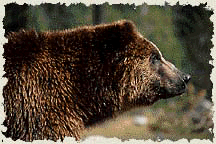Bozeman Chronicle*Opinion
By Todd Wilkinson
How many grizzly bears are alive today in the greater Yellowstone ecosystem?
Between 400 and 600, says the U.S. Fish and Wildlife Service. Many more than in the mid 1980s. Enough to soon move forward with taking the Yellowstone grizzly off the list of threatened species by removing the bear’s protection under the Endangered Species Act (ESA), the agency has said.
For the lay citizen, it’s difficult to figure out what top bear managers are thinking. A year ago, we were told in the New York Times that the Fish and Wildlife Service planned to begin the process of delisting as early as this summer.
But recently, as the science of bear management has come under scrutiny, the national grizzly bear recovery coordinator was quoted in a Colorado newspaper as suggesting he has no immediate plans to delist.
Regardless of what is said, there is posturing afoot to declare victory with the Yellowstone grizzly, to remove federal protection, and to let the states assume primary management authority.
There are, however, plenty of reputable critics who say delisting the bear isn’t a good idea. Why? Because too many unanswered questions remain.
This week when bear managers meet in Bozeman they would do well to ensure the public is invited to attend all meetings. In the past, certain public bear managers brazenly shut the public out of public meetings paid for with public dollars.
Now would be a good time for bear managers to state clearly what their agenda is. Here are a few questions that need to be answered:
(1) Bear managers claim that when the Yellowstone grizzly population is delisted and given over to the states, bears will enjoy greater protection than they currently receive.
It’s a fascinating assertion given that it contradicts the expectations of politicians. They want the bear delisted ostensibly to make it easier for their constituents to log, mine, run cattle and sheep, drive their off-road vehicles through national forests, and hunt bears without fear of being prosecuted for “accidentally” shooting a grizzly.
Perhaps bear managers can explain the paradox of how a delisted grizzly population will be better safeguarded than it is under the ESA.
(2) Veteran grizzly bear researcher David Mattson, who has come under fire for disagreeing with the sanguine outlook for bears, raises legitimate concerns about the status of four key grizzly foods.
The future of whitebark pine tree seeds, spawning cutthroat trout in Yellowstone Lake, army cutworm moths in the high talus slopes, and a ready supply of carrion from large ungulates (bison, elk, and moose) are all tenuous.
Together, according to Mattson’s data, the four foods mentioned above account for 85 percent of the average bear’s energy needs. And it has already been shown that when declines in just one of those foods occur — whitebark pine seeds — bears wander out of the wilderness and come into conflict with people, which means higher numbers of bears die.
To put this in perspective, last year 29 grizzlies in the Northern Continental Divide Ecosystem were killed when they came into conflict with humans after wild berry crops failed.
What’s compelling about the above scenario is that it’s largely beyond the control of bear managers. So the question is what do they have as a contingency plan in the event that natural grizzly foods go south and bears die in increasing numbers?
Bear managers claim that if Yellowstone grizzlies fall into a biological slide, the federal government will simply move to have the population relisted.
But that’s far easier said than done, particularly in the current political climate when Western Republicans will do anything they can to keep a species off the list. And even if their stalling proved unsuccessful, what’s to say relisting would occur soon enough to stop erosion of essential habitat?
(3) A group of congressmen has called for an investigation of the science used to count bears, amid allegations that the system is flawed: that certain scientists have been punished for questioning the government’s plan to delist; and that there has been an unofficial policy among certain bear managers of trying to obfuscate public accountability by shutting the public out of meetings, by resisting compliance with Freedom of Information Act requests, and for basing bear recovery on political considerations rather than biological ones.
Here ’s the bottom line. More public money, more public manpower, more bureaucratic positioning has been spent on grizzly bears in the lower 48 states over the last quarter century than on any other imperiled terrestrial species.
And yet, there has never been any significant, independent public oversight of the grizzly bear management program (save reviews conducted by friends of bear managers) to let the public know if what it is getting is a good investment.
That’s not an indictment of current and past bear managers who, for the most part, have exhibited heroic dedication to the recovery of the Great Bear.
But it does raise valid, fundamental questions about accountability, since so much is at stake with the grizzly that will affect how all threatened and endangered species in this country are managed.
The public deserves to have this debate waged out in the open, not behind closed doors; in a forum where scientists who dissent have their viewpoints sincerely considered; and in an environment where delisting is contemplated with the best available biology, not driven by politics.

